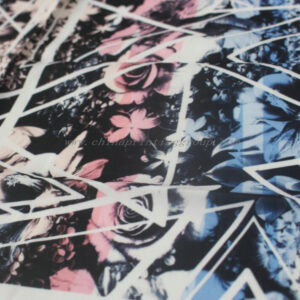Blog
What is digital printing fabric?

What is digital printing fabric?
—The Concept of Digital Printing Technology
The technology of digital printed fabric (cloth) is a high-tech product integrating machinery and computer information technology gradually formed with the continuous development of computer technology. It first appeared in the mid-1990s. The emergence and continuous improvement of this technology has brought a new concept to the textile printing and dyeing industry. Its advanced production principles and means have brought an unprecedented development opportunity to the textile printing and dyeing industry.
Digital printed fabric (fabric) is the process of inputting pattern patterns into a computer in digital form, editing and processing them through a computer printing color separation and tracing system (CAD), and then controlling a micro piezoelectric inkjet nozzle to directly spray specialized dye onto the fabric to form the desired pattern. The promotion and application of digital printing technology will have a significant impact on the development of China’s textile industry in the 21st century, manifested as:
(1) Digital printed fabrics (fabrics) will directly promote the development of “green textiles” and “green manufacturing”.
Due to the fact that digital printed fabrics (fabrics) are sprayed with dye solution directly into specialized boxes as needed on the fabric, without waste or wastewater pollution, the discharge of dye solution from the printing machine in the sizing room is eliminated, achieving pollution-free printing process. Film has also been omitted. Consumption of materials such as silk screens and silver cylinders. It not only reduces the burden on enterprises, but also meets the requirements of environmental protection.
(2) Digital printed fabrics (fabrics) will maximize the satisfaction of people’s personalized needs and improve their quality of life.
For textile designers, it is an excellent tool for unleashing their personal creativity, allowing them to fully showcase their creative talents and turn their most ideal works into realistic finished products. Digital printing is rich in colors, using four colors and spot colors, which can print 16.7 million colors. For consumers, from home decoration to clothing and travel supplies, personalized designs can be made according to personal preferences. In this sense, the emergence of a new technology will also drive a new market and stimulate a new round of consumer demand.
(3) Digital printed fabrics (fabrics) drive enterprise production methods and business models
For a long time, due to the limitations of traditional processes, the production of printed products must reach a certain scale and quantity in order for enterprises to have benefits. With the development of the economy, market demand is becoming increasingly diversified and personalized. The emergence of digital printing technology has solved this long-standing problem for enterprises. In the past, it took several days or even tens of days for a product to be designed and delivered. Now, customers have selected patterns and fabrics, and the finished product can be delivered in 1-2 hours, which can better meet the personalized needs of consumers for clothing or decoration. Some predict that in the 21st century, digital technology will be combined with network technology at the fastest speed to achieve a fully personalized, one-on-one customized business model.
